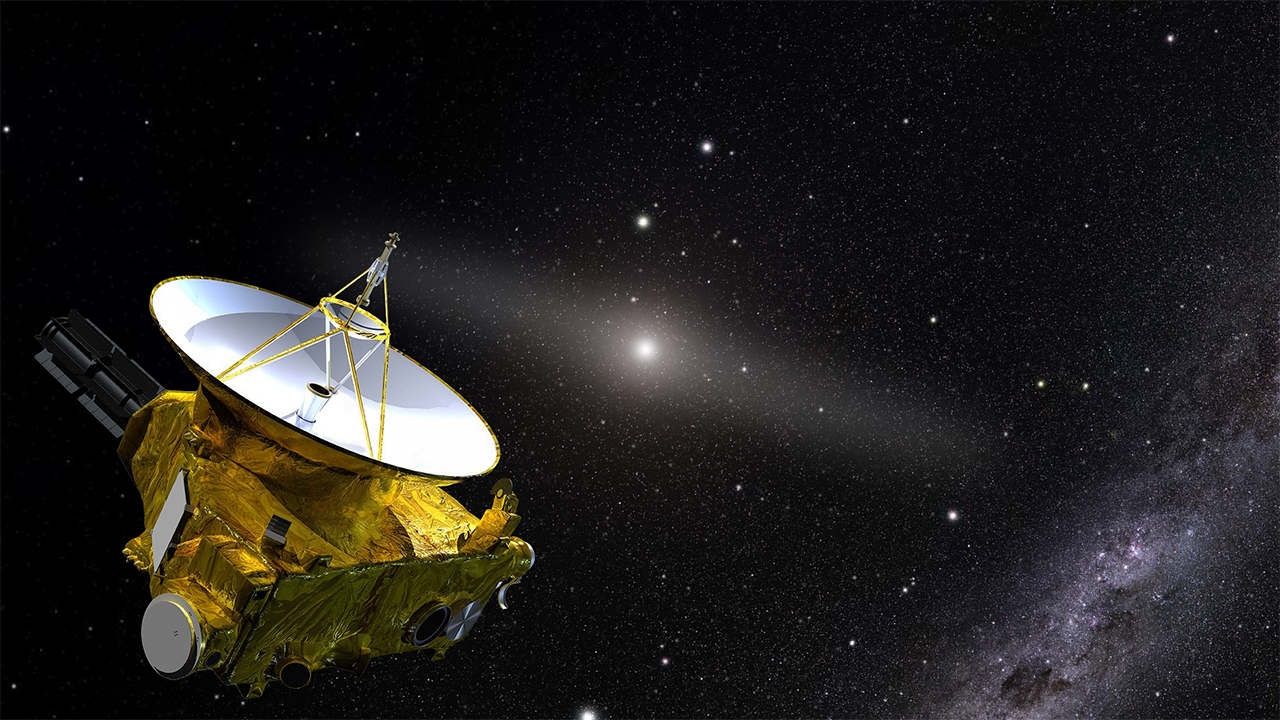
NASA has found that there are fewer galaxies than initially thought, leaving the possibility that we are alone in the universe
Mission of NASA He discovered that there may be much fewer galaxies than he initially thought, which opens up the possibility that humanity is alone in the universe.
The New Horizons mission, which resulted in the first Close-up photos of Pluto, Provided enough data for scientists to determine that the number of galaxies could be in the hundreds of billions, instead of the 2 trillion, as was initially thought.
“It’s an important number to know – how many galaxies are there?” Lead author of the study, Mark Postman, said in A. statement. “We simply don’t see light from 2 trillion galaxies.”
This artist’s illustration shows NASA’s New Horizons spacecraft in the outer solar system. In the background is the sun and a glowing band representing the light of the zodiac, caused by the sunlight reflected by the dust. By traveling outside the inner solar system and the accompanying light pollution, New Horizons have been able to answer the question: How dark is space? At the bottom right are the background stars of the Milky Way. (Credit: Joe Olmsted)
NASA’s Pluto eyes are important
The results are published and readable Here, In stark contrast to the long-used 2 trillion figure, thanks to data from the Hubble Space Telescope. Scientists used a mathematical model to determine that 90% of galaxies in the universe were outside Hubble’s ability to see “visible light.”
Traveling at nearly 33,000 miles per hour, the $ 720 million New Horizons spacecraft, which launched in January 2006, will eventually reach interstellar space, like Voyager. Probes Kiss. The fact that it is currently close to the edge of the solar system allows it to see the surrounding sky ten times darker than Hubble’s view.
“These kinds of measurements are very difficult. Lots of people have been trying to do this for a long time,” explains co-author Todd Lauer. “New Horizons has provided us with an advantage point to better measure the cosmic visual background than anyone has been able to do.”
The New Horizons spacecraft is now 4.4 billion miles from Earth.
New Horizon spacecraft makes Pluto fly fast
“Take all the galaxies that Hubble can see, double that number, and that’s what we see – but nothing more than that,” Lauer added.
NASA’s James Webb Telescope, whose launch was delayed due to Coronavirus pandemicIt could help scientists learn more about faint glow in the background of space and see if these are dwarf galaxies or something else.
Click here for the FOX NEWS app
The New Horizons spacecraft has made a number of discoveries in recent memory, including the body Arokoth, Formerly known as Ultima Thule. In May 2019, New Horizons discovered water and organic molecules on Arokoth, Which lies deep in the so-called Kuiper Belt, or twilight region, behind the orbit of Neptune.

“Analist. Schepper. Zombiefanaat. Fervente reisjunkie. Popcultuurexpert. Alcoholfan.”
